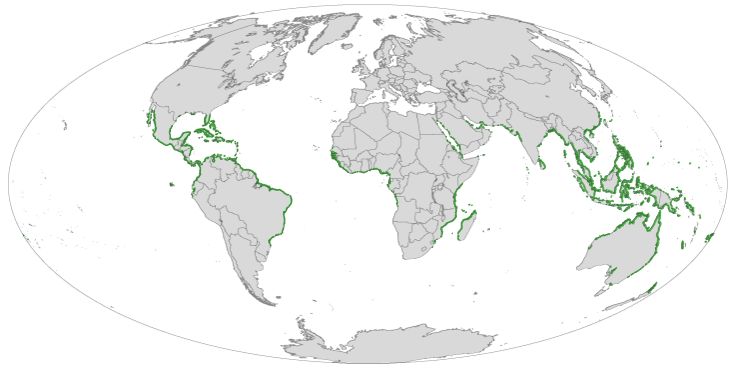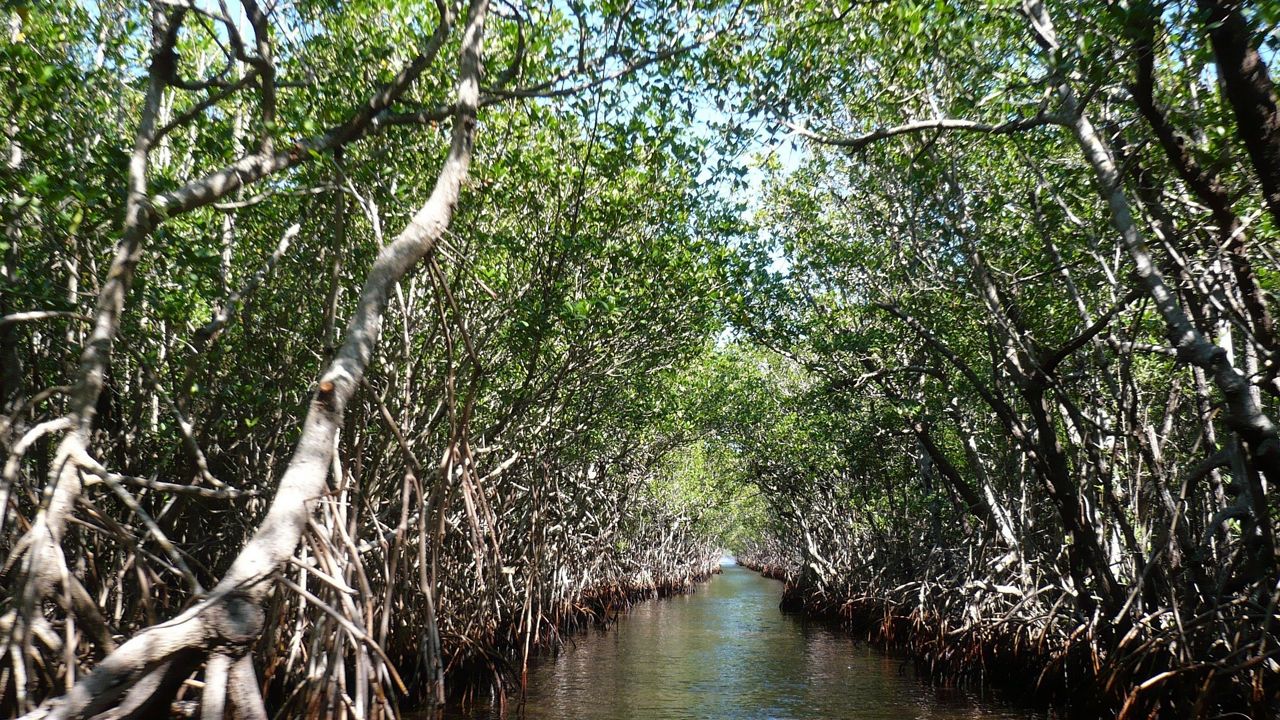Mother Nature’s best barriers and protection for coastal communities are mangroves. They defend us against storm surge, currents, high waves and tides.
Not only do mangroves serve as a natural protection for people living near the coast, but they’re extremely beneficial for fish, wildlife and the entire ecosystem.
Mangroves are a group of tropical trees, shrubs and palms that grow in saltwater or brackish water. They have a deep and tangled system of roots that appear to come out of the water during low tides, but can handle being flooded during high tides.
Mangroves are a common feature of tropical and sub-tropical coastlines. Almost half of the world’s mangroves are found in Asia, although in the U.S., they are found along the coast of the Florida peninsula, throughout the Everglades and along the southern Gulf Coast of Texas.
Since mangroves can’t withstand freezing temperatures, they’re only in warm climates close to the equator.

They grow in coastal intertidal zones, which is the area along the shore where land and water meet between high and low tides. They’re also found in rivers and estuaries, and can live on muddy soil, sand or coral rock.
Mangroves can tolerate water up to 100 times saltier than most other trees or plants can tolerate, because they filter out the salt from the water as it enters their roots. Since mangroves roots are tough, they can handle growing in harsh environments.
People and wildlife benefit from mangroves, especially people who live near vulnerable coastlines. They act as natural protection to coastal communities and help limit flooding during significant weather events like hurricanes or tsunamis.
Watch the video below of the small-scale model that illustrates how a mangrove forest absorbs and disperses waves coming toward the shore, limiting the effects that the waves could have on the shoreline.
In 2019, scientists completed a study valuing the flood risk reduction benefits on Florida’s mangroves. South Florida’s mangrove forests reduced flooding for over half a million people during Hurricane Irma in 2017.
They concluded that the value of mangrove forests during Irma helped avert $1.5 billion in storm damage, and that mangroves reduce annual flood risk by 25.5% in Collier County in southwest Florida.
Along with the benefits for coastal communities, tidal water that drifts through the complex root systems deposits sediment, which also reduces coastal erosion. The root systems in mangrove forests filters pollutants from the water, which improves water quality flowing back into rivers, streams and the ocean.
Mangrove forests are home to birds, fish and mammals, serving as a breeding ground and nursery for fish and other marine life. They also provide a sheltered habitat and nesting area for coastal birds.
Mangroves across the world face threats like any other natural resource. Human activities like pollution and land development can be harmful to mangroves. Natural threats, like coastal storms and freezing temperatures, can also threaten a healthy mangrove forecast.
Our team of meteorologists dive deep into the science of weather and break down timely weather data and information. To view more weather and climate stories, check out our weather blogs section.



